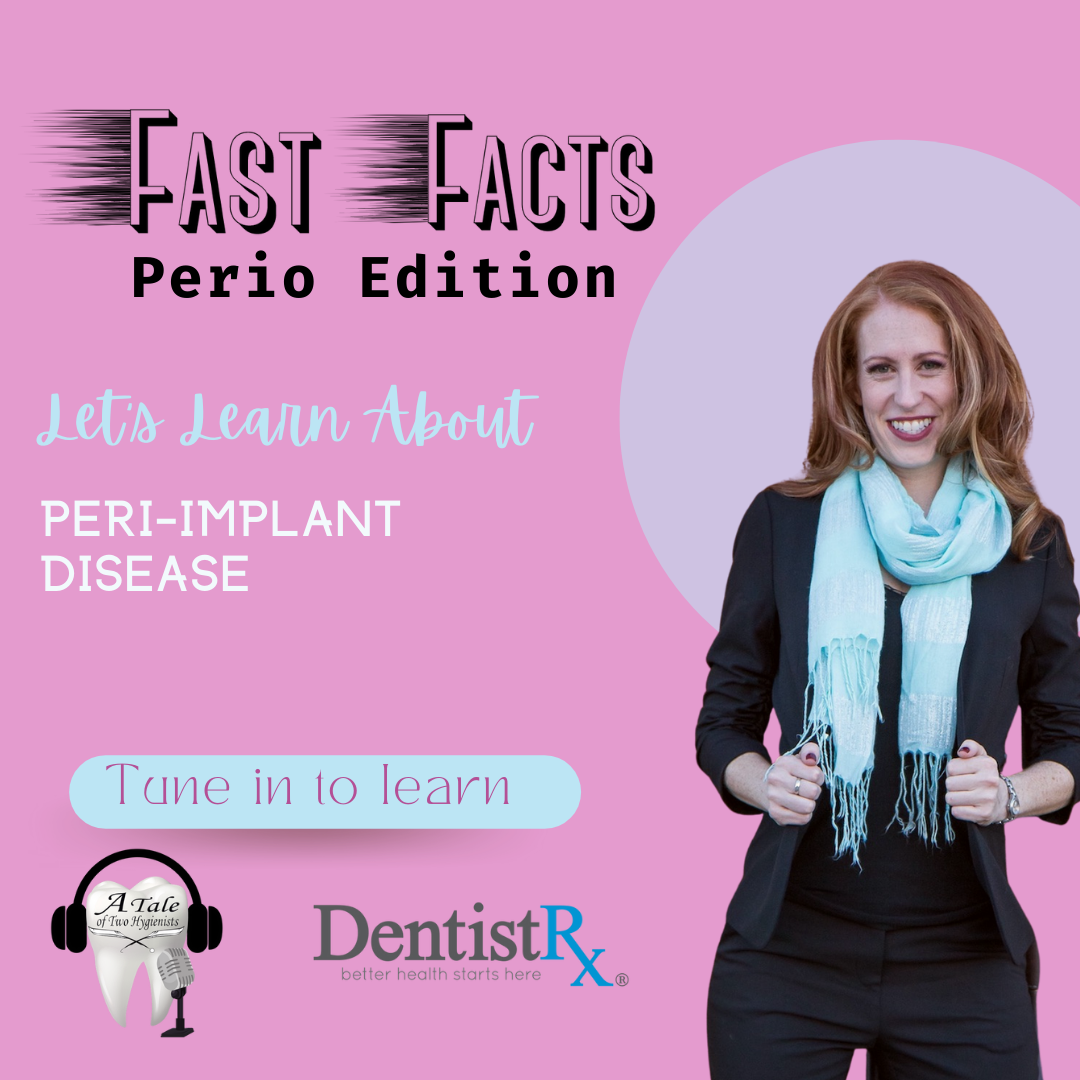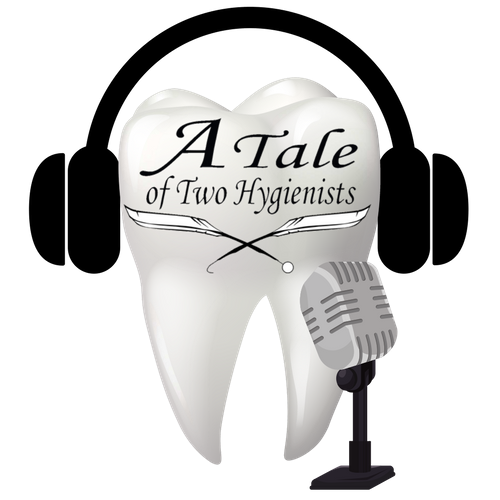
Fast Facts: Perio Edition Episode 72
[Andrew Johnston, RDH]
Welcome back everyone! You are listening to another episode of Fast Facts- Perio Edition brought to you by A Tale of Two Hygienists in partnership with DentistRX. And now, please welcome your host, Katrina Sanders.
[Katrina Sanders, RDH]
Hello, and welcome to Fast Facts Perio Edition. This week we are continuing the Convo, talking about peri-implant disease, and if you all tuned in last time you heard about the drama for your mama around to probe or not to probe? And so we all know that it is critical for us to ensure that we are accurately assessing our dental implants. Over the next couple of weeks, we're going to be talking about various modalities of peri-implant disease. But in order to get started in peri-implant disease, we first need to know what peri-implant health looks like.
So we've been studying this over the past several decades as we've begun to, of course, explore health and disease levels of peri-implant tissues. And we have found that specifically when we're looking at the stability of the supportive structure around a dental implant, we're talking about both soft and hard tissue components. The soft tissue component that we talk about is denoted as peri-implant mucosa, and we know that it is formed during that wound healing process following the loading of a dental implant and its abutment. This mucosa is primarily collagen and connective tissue. We got a few fibroblast tossed in there and a few vascular components, we know that because oftentimes we can't see bleeding on or around a dental implant. It's also shown that when we talk about healed peri-implant mucosa on the bucle aspect that this peri-implant mucosa averages about 3 to 4 mm in height from the mucosal margin to the crest of the Peri-implant bone.
When we talk about healthy peri-implant mucosa, we're talking about keratinized mucosa. This is the term that we know describes masticatory mucosa, and it's present at many, but not all, peri-implant sites. Keratinized mucosa extends from the margin of that mucosa all the way down to that movable oral mucosa lining and is comprised primarily of lamina propria. We do typically find that the width or the thickness of keratinized mucosa on the buccal or facial side of teeth is, as a rule, about a millimeter greater than what we typically see at peri-implant sites. This is where we started to develop a few concerns about the thickness of the what we call orthokeratinized squamous epithelium around our dental implants that really we want to ensure that we have thickness and keratinization of our peri-implant mucosa to ensure strength and stability. Then we know that mucosa protects the underlying bone, which is our hard tissue component, and this hard tissue component is what forms the AAP terms a contact relationship to that implant surface.
We know that following the installation or loading of a dental implant, that we begin to see modeling of the bone and this modeling of the bone is what allows for what we call osseointegration, a term described as bone to implant contact on a microscopic level. There's some really cool studies that actually talk about how these mesenchymal cells began to form. And I'm not going to bore you with all the deets around histology and embryology because we all have PTSD from that when we were in hygiene school, but it really is incredible. About a week after a dental implant is loaded, microscopically, we can already start to see fingerlike projections of woven bone around that clot of vasculature that forms. After about two to four weeks, this is where we start to see that woven bone begin to extend into the titanium itself. And within six to twelve weeks, we have seen that woven bone getting completely replaced by Lamellae bone and marrow. So this is where we start to see about six to twelve weeks is when we see optimal healing around a dental implant. We know that the gingiva and the peri-implant dental bone allow for adhesion or ceiling to be able to protect the peri-implant surfaces from oral environmental challenges and keep that implant surface stable in the presence of exposure to microorganisms.
Stay tuned as we continue the conversation in our coming weeks about what happens when this peri-implant seal is challenged and the seal is not resilient enough to protect our beautiful peri-implant mucosal and bony membranes.
This has been another episode of Fast Facts - Perio Edition with Katrina Sanders, RDH. Please feel free to reach me on Instagram @thedentalwinegenist or on my website www.KatrinaSanders.com Cheers.
[Andrew Johnston, RDH]
Thank you for listening to another episode of Fast Facts - Perio Edition, brought to you in part by DentistRX makers of the InteliSonic line of power brushes. Find out more by visiting their website at www.dentistrx.com. We'll see you next week for another Fast Fact!
Resource:
Renvert, Stefan, G. Rutger Persson, Flavia Q. Pirih, and Paulo M. Camargo. "Peri-implant health, peri-implant mucositis, and peri‐implantitis: Case definitions and diagnostic considerations." Journal of clinical periodontology 45 (2018): S278-S285.
